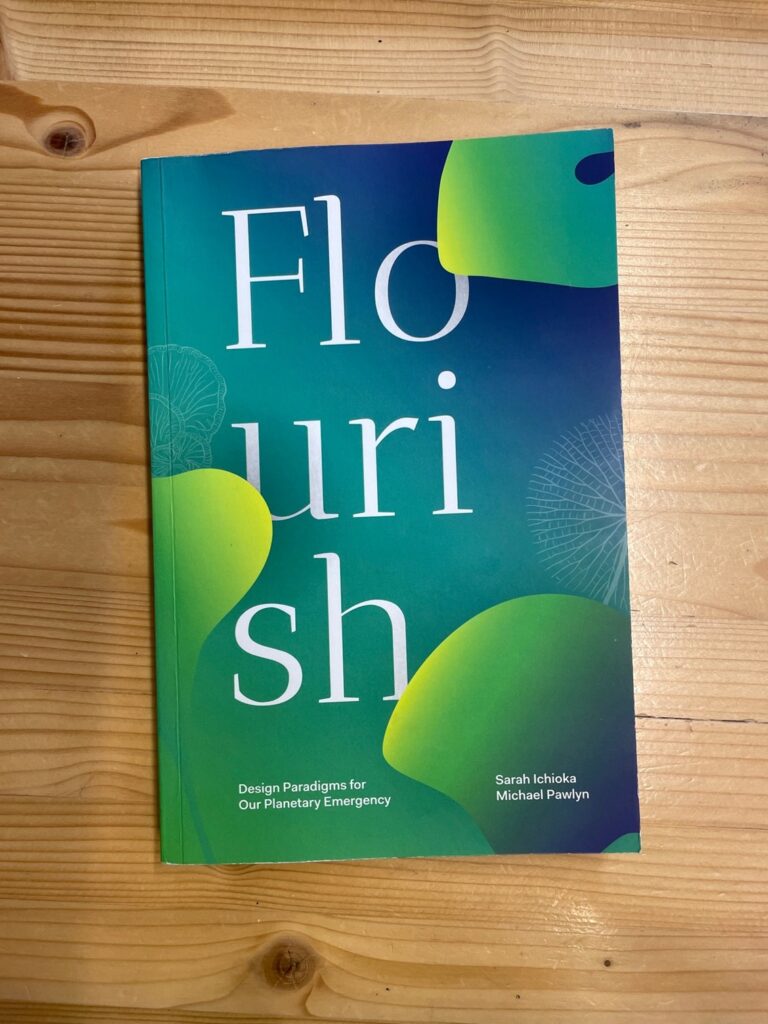Embracing Possibilism
September 05, 2023
This year’s fires, heat waves, floods, and storms have certainly brought a heightened understanding of the devastating effects of climate change. With that realization often comes despair. Things are out of control; there’s nothing we can do – life on earth is deteriorating and all that’s left for us is to live with the consequences. This type of hopelessness is common, but unproductive.
As architects, we know that the work we do has a direct effect on the environment. We also know that as a profession, it is within our power to serve people and planet better. Rather than despair, we focus on practical, solutions-based initiatives that can help shape our mindset and our practices.
For the past few weeks the Placework team has been discussing Sarah Ichioka and Michael Pawlyn’s thought-provoking book, Flourish: Design Paradigms for our Planetary Emergency. This exploration of regenerative practice makes a case for a new way for architects to approach our work: one that actively supports movement toward renewed human and planetary health.
Ichioka and Pawlyn introduce the concept of Possibilism, which encourages us to look beyond the constraints of conventional thinking and imagine a world where solutions to our most pressing challenges are not just possible but attainable. It’s a mindset that transcends the boundaries of pessimism and embraces hope – not as wishful thinking but as a catalyst to action. They cite a 2012 study that found that in reviewing major 20th-century campaigns for social change, “every campaign that involved active participation of 3.5% of the population was successful.” 3.5%?! That is possible.
The idea of a “perspective of minimized agency” that most architects demonstrate in their professional practice resonated with our experience. Many of our peers perceive that change in how we build needs to be driven by our clients, or by government policies, and minimize the power we actually have to catalyze that change. The question is, “what if taking concerted action on global crises could also be positively contagious?”
Taking inspiration from the work of social scientists, physicists, biologists, and economists, the authors explore how we can overcome our bias and create work that has a strong positive effect. The use of evidence-based design, which ties design decisions to demonstrated outcomes, is one way to circumvent wishful thinking and design for a specific outcome, whether that be a more energy-efficient mechanical system or a successful public space. Designing this way requires curiosity as well as flexibility and rigor. Flexibility in the willingness to learn and accept new information, rigor in the application of the information without reverting to our traditional way of working.
Project Drawdown, an initiative begun by Paul Hawken in 2013, is an example the book cites for how evidence-based solutions can be identified and enacted. The project leverages research to demonstrate what is possible, and to accelerate the adoption of climate solutions worldwide. The influential book outlining the priority of the top 100 climate solutions, published in 2018, has led to further research, activism, and the online Drawdown Solutions Library.
Possibilism challenges us to prioritize choices that support planetary health. in every aspect of our work, from the choice of carbon-sequestering materials to the design of energy-efficient systems. It encourages us to integrate renewable energy sources, embrace circular economy principles, and create spaces that promote well-being and connectivity. These solutions exist; we only need to have the cultural will to learn about them and put them to use.
At Placework, we’re energized by the many ways we can expand our agency. They include what Ichioka and Pawlyn articulate as, “opportunities to radically rethink, and reuse, existing building types so that they are better for people health and use less energy….to pursue projects, clients, and collaborators whose activities align with mutual flourishing within planetary boundaries and to decline those who don’t. To hire and promote good colleagues. To inspire clients by developing solutions that they never thought would be possible. To champion new approaches via whatever platforms we have access to.”
These are actions that we take in the face of uncertainty. We are continuously learning and advancing our practices, beyond the technical – efficient envelopes and low-carbon materials – to the sociological – design to affect healthy outcomes. New research, products, and practices make constant improvement an imperative. Poet and author Maya Angelou captured our charge: “Do the best you can until you know better. Then when you know better, do better.”
Resources
Flourish Book
